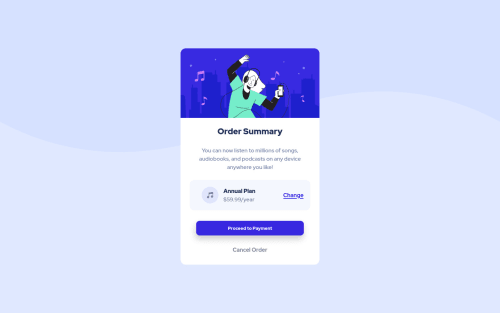order-summary-component

Solution retrospective
i finished my fourth project and i am waiting for any feedback guys
Please log in to post a comment
Log in with GitHubCommunity feedback
- @sandro21-glitch
Hi MOHAMED
Here are a few suggestions for your code
Use semantic HTML tags such as header, section, and footer, instead of just a main tag to give structure to your HTML.
Use meaningful class and id names, like "order-summary-container" instead of just "container".
You could use CSS variables for storing common values like colors and fonts, which will make it easier to maintain and update your styles.
For the button, you could consider using a pseudo-element for the button text to avoid the need for an additional p tag.
Overall, the CSS is well-structured and follows a consistent style, with appropriate font sizes, colors, and spacings for various elements.
Happy Coding
Marked as helpful
Join our Discord community
Join thousands of Frontend Mentor community members taking the challenges, sharing resources, helping each other, and chatting about all things front-end!
Join our Discord